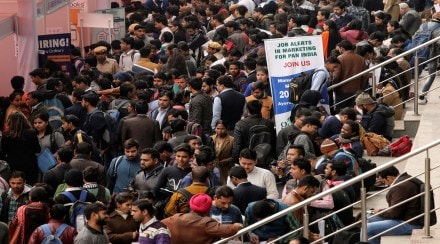India faces the daunting challenge of creating jobs that are broad-based, i.e. jobs for youth as well as across sectors, Rumki Majumdar, economist at Deloitte India said. The job quality in the country suffered as a result of the pandemic, Majumdar told Financialexpress.com. Another issue is of fewer women participating in the labour market than their male counterparts, which creates inequality in the labour market and impedes growth, she added.
“In India, fewer women participate in labour markets than their male counterparts, thereby impeding the nation’s ability to ensure equitable growth and development,” Rumki Majumdar said. “In 2012, the G20 countries committed to reducing the gender gap in labour participation by 25 per cent by 2025 (the Brisbane 25×25 goal). By that metric, India will have to reduce the gender gap in participation by over 13 per cent by 2025,” she added. The female labour force participation rate was at 9.4 per cent in India for the period between September-December 2021, according to CMIE.
Job market in India: Are there signs of economic distress?
Earlier this month, the Centre for Monitoring of Indian Economy (CMIE) said in a report that India’s labour force fell by 38 lakhs in the month of March to the lowest level in the last eight months, comprising a decline in the count of both employed and unemployed. “What the labour market statistics of March 2022 show is India’s biggest sign of economic distress. Millions left the labour markets, they stopped even looking for employment, possibly too disappointed with their failure to get a job and under the belief that there were no jobs available,” CMIE added.
In its response, the Union Labour and Employment Ministry refuted the claim and said it would be factually wrong to infer that half of the working age population has lost hope for work. The working age population had dropped out of the labour force as a large proportion was pursuing education or engaged in unpaid activities such as caregiving, the government said.
India’s fundamentals remain strong
In the India economic outlook report released this month, Deloitte cut India’s economic growth forecast for FY 2023 by 45 basis points, in the range between 8.3 per cent and 8.8 per cent, amid the ongoing conflict in Ukraine. The big four consultancy firm, however, expects India’s strong economic fundamentals to help avoid the long-term impacts of war.
“The results of growth-enhancing policies and schemes (such as production-linked incentives and government’s push toward self-reliance) and increased infrastructure spending will start kicking in from 2023, leading to a stronger multiplier effect on jobs and income, higher productivity, and more efficiency—all leading to accelerated economic growth,” according to the report.
